
Healthcare tech company Omnicell (NASDAQ:OMCL) announced better-than-expected revenue in Q2 CY2025, with sales up 5% year on year to $290.6 million. On top of that, next quarter’s revenue guidance ($295 million at the midpoint) was surprisingly good and 3.2% above what analysts were expecting. Its non-GAAP profit of $0.45 per share was 66.7% above analysts’ consensus estimates.
Is now the time to buy Omnicell? Find out by accessing our full research report, it’s free.
Omnicell (OMCL) Q2 CY2025 Highlights:
- Revenue: $290.6 million vs analyst estimates of $276.9 million (5% year-on-year growth, 4.9% beat)
- Adjusted EPS: $0.45 vs analyst estimates of $0.27 (66.7% beat)
- Adjusted EBITDA: $38.38 million vs analyst estimates of $27.23 million (13.2% margin, 40.9% beat)
- The company lifted its revenue guidance for the full year to $1.15 billion at the midpoint from $1.13 billion, a 1.3% increase
- Management raised its full-year Adjusted EPS guidance to $1.53 at the midpoint, a 15.1% increase
- EBITDA guidance for the full year is $137.5 million at the midpoint, above analyst estimates of $125.3 million
- Operating Margin: 2.8%, up from 1.2% in the same quarter last year
- Free Cash Flow Margin: 9.2%, down from 17.8% in the same quarter last year
- Market Capitalization: $1.39 billion
Company Overview
Driven by the vision of an "Autonomous Pharmacy" with zero medication errors, Omnicell (NASDAQ:OMCL) provides medication management automation and adherence tools that help healthcare systems and pharmacies reduce errors and improve efficiency.
Revenue Growth
A company’s long-term performance is an indicator of its overall quality. Any business can put up a good quarter or two, but many enduring ones grow for years. Regrettably, Omnicell’s sales grew at a mediocre 4.9% compounded annual growth rate over the last five years. This fell short of our benchmark for the healthcare sector and is a tough starting point for our analysis.
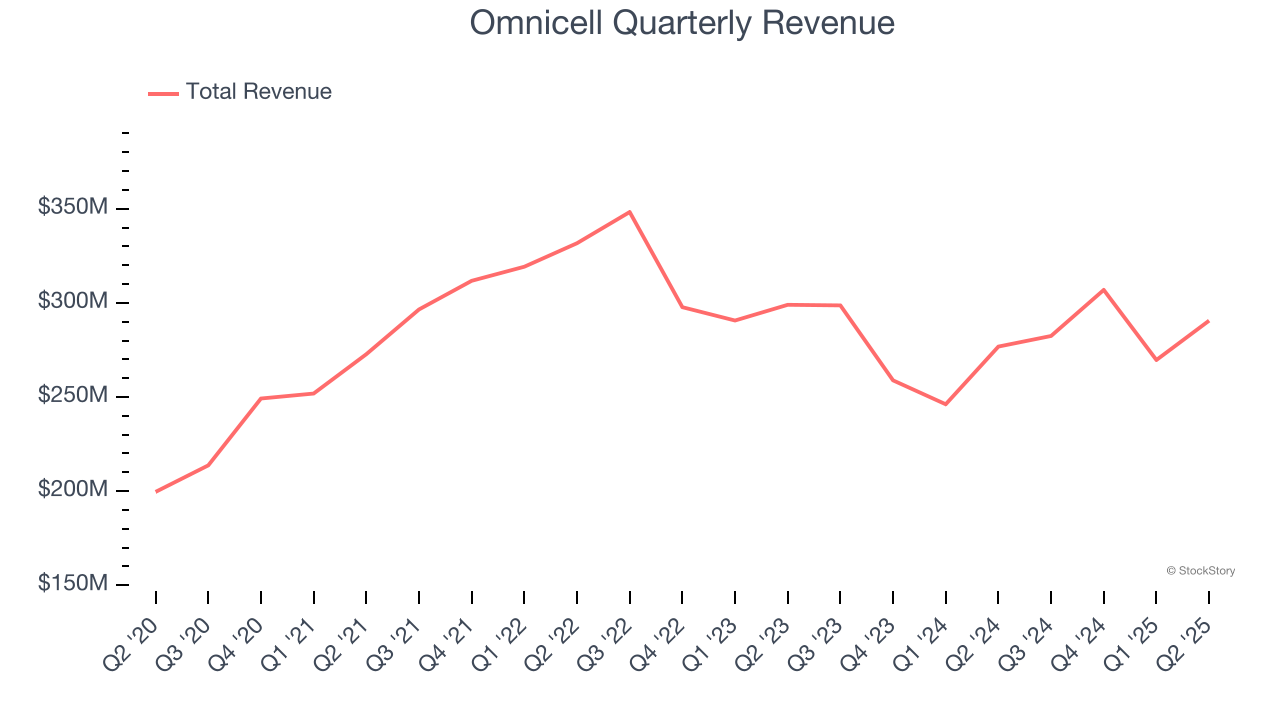
Long-term growth is the most important, but within healthcare, a half-decade historical view may miss new innovations or demand cycles. Omnicell’s performance shows it grew in the past but relinquished its gains over the last two years, as its revenue fell by 3.5% annually. 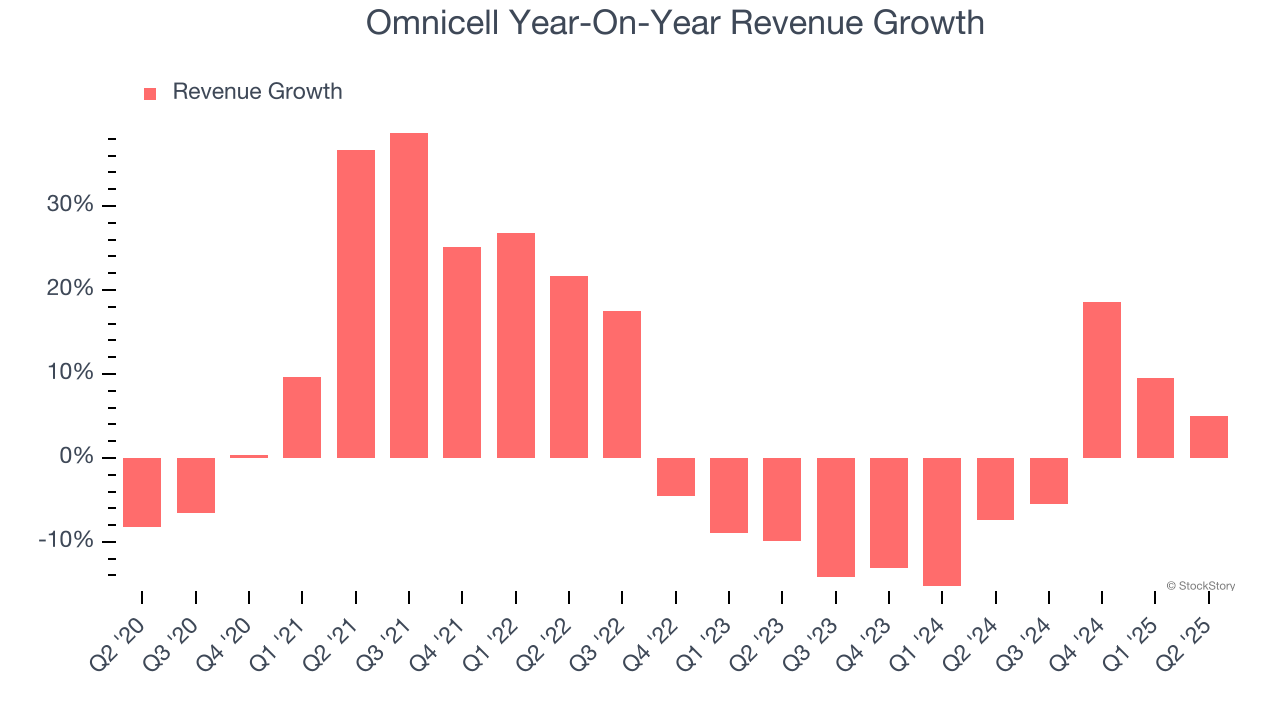
We can dig further into the company’s revenue dynamics by analyzing its most important segment, Product. Over the last two years, Omnicell’s Product revenue averaged 9.1% year-on-year declines. This segment has lagged the company’s overall sales.
This quarter, Omnicell reported modest year-on-year revenue growth of 5% but beat Wall Street’s estimates by 4.9%. Company management is currently guiding for a 4.5% year-on-year increase in sales next quarter.
Looking further ahead, sell-side analysts expect revenue to remain flat over the next 12 months. While this projection implies its newer products and services will fuel better top-line performance, it is still below average for the sector.
Software is eating the world and there is virtually no industry left that has been untouched by it. That drives increasing demand for tools helping software developers do their jobs, whether it be monitoring critical cloud infrastructure, integrating audio and video functionality, or ensuring smooth content streaming. Click here to access a free report on our 3 favorite stocks to play this generational megatrend.
Operating Margin
Omnicell was profitable over the last five years but held back by its large cost base. Its average operating margin of 1.4% was weak for a healthcare business.
Analyzing the trend in its profitability, Omnicell’s operating margin decreased by 6.6 percentage points over the last five years, but it rose by 4.2 percentage points on a two-year basis. Still, shareholders will want to see Omnicell become more profitable in the future.
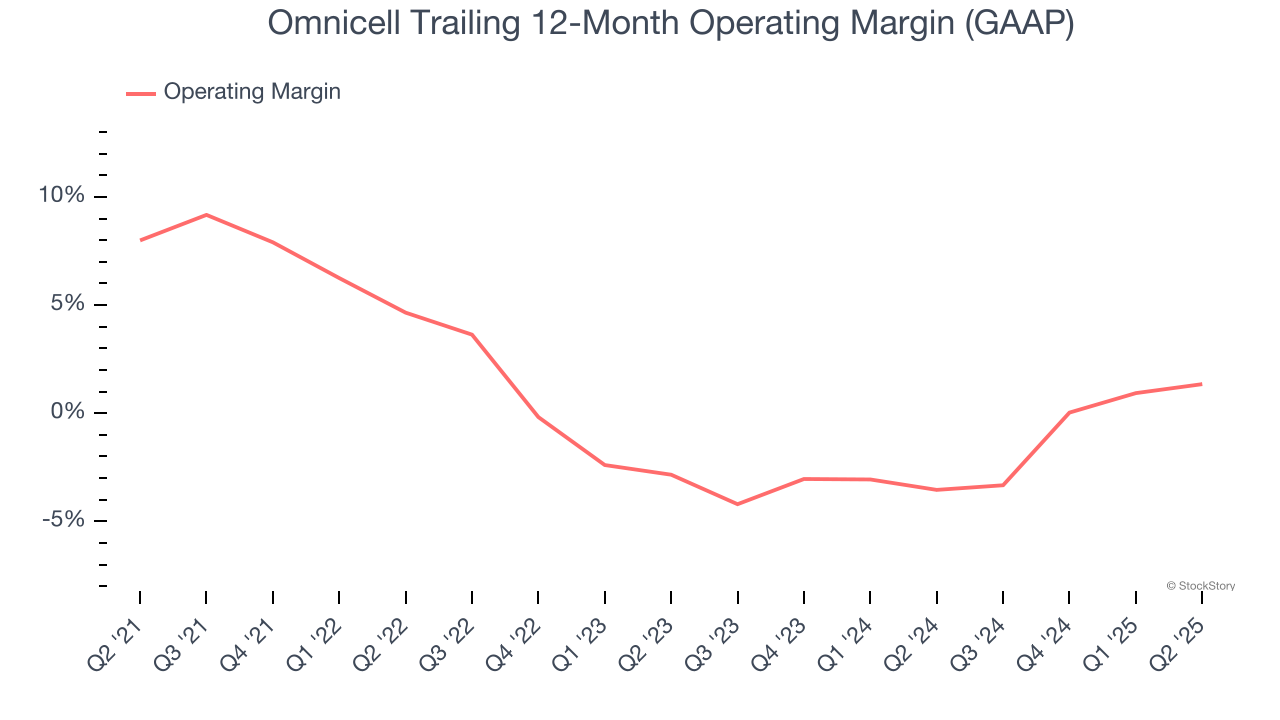
In Q2, Omnicell generated an operating margin profit margin of 2.8%, up 1.6 percentage points year on year. This increase was a welcome development and shows it was more efficient.
Earnings Per Share
Revenue trends explain a company’s historical growth, but the long-term change in earnings per share (EPS) points to the profitability of that growth – for example, a company could inflate its sales through excessive spending on advertising and promotions.
Sadly for Omnicell, its EPS declined by 6.1% annually over the last five years while its revenue grew by 4.9%. However, its operating margin actually improved during this time, telling us that non-fundamental factors such as interest expenses and taxes affected its ultimate earnings.
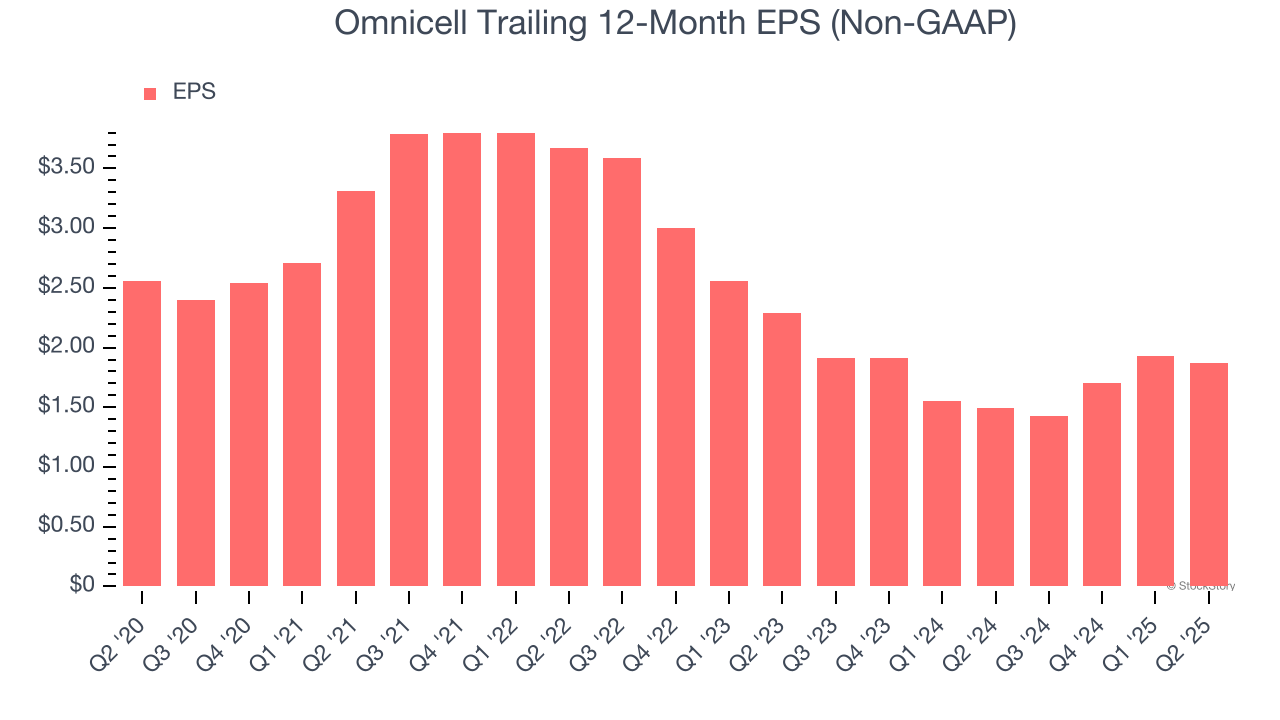
Diving into the nuances of Omnicell’s earnings can give us a better understanding of its performance. As we mentioned earlier, Omnicell’s operating margin expanded this quarter but declined by 6.6 percentage points over the last five years. Its share count also grew by 10.1%, meaning the company not only became less efficient with its operating expenses but also diluted its shareholders. 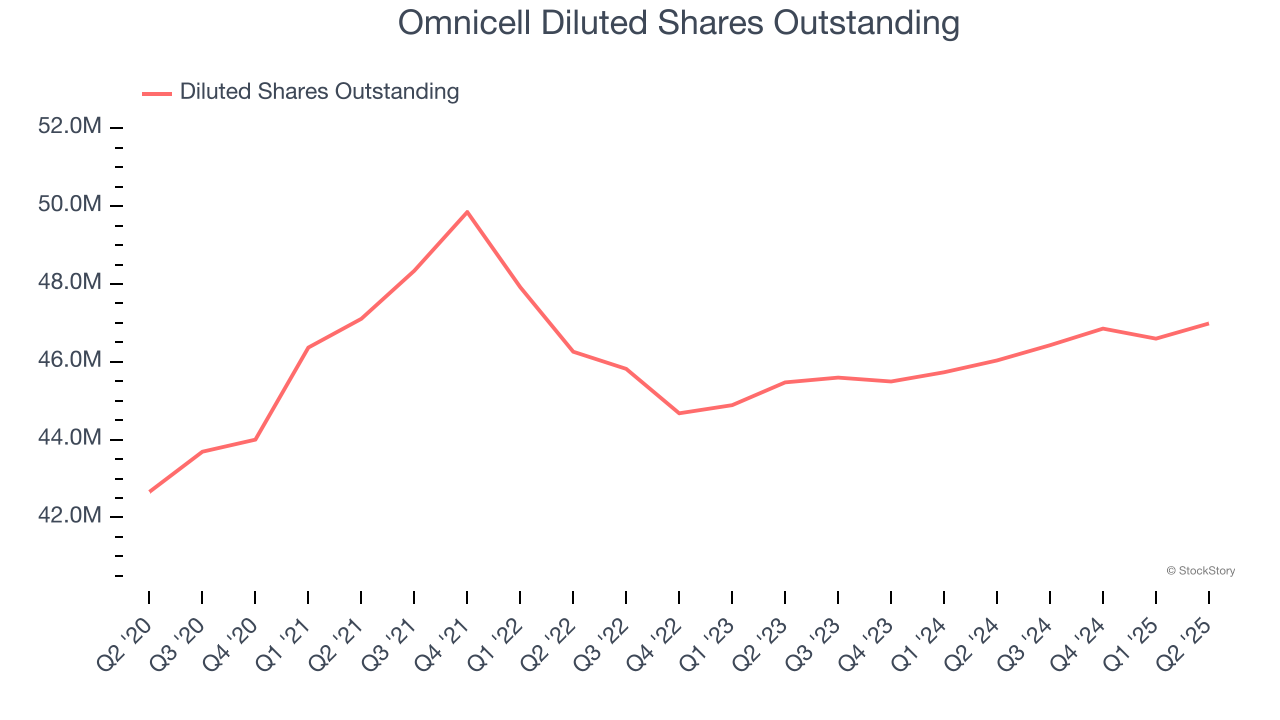
In Q2, Omnicell reported adjusted EPS at $0.45, down from $0.51 in the same quarter last year. Despite falling year on year, this print easily cleared analysts’ estimates. Over the next 12 months, Wall Street expects Omnicell’s full-year EPS of $1.87 to shrink by 22.7%.
Key Takeaways from Omnicell’s Q2 Results
We were impressed by how significantly Omnicell blew past analysts’ EPS expectations this quarter. We were also excited its full-year EPS guidance outperformed Wall Street’s estimates by a wide margin. On the other hand, its EPS guidance for next quarter missed and its EBITDA guidance for next quarter fell short of Wall Street’s estimates. Overall, we think this was still a solid quarter with some key areas of upside. The stock traded up 2.6% to $30.52 immediately following the results.
Omnicell put up rock-solid earnings, but one quarter doesn’t necessarily make the stock a buy. Let’s see if this is a good investment. We think that the latest quarter is only one piece of the longer-term business quality puzzle. Quality, when combined with valuation, can help determine if the stock is a buy. We cover that in our actionable full research report which you can read here, it’s free.
